Paymaster of the Forces
_by_John_James_Baker.jpg)
The Paymaster of the Forces was a position in the British government. The office, which was established 1661 after the Restoration, was responsible for part of the financing of the British Army. Its full title was Paymaster-General of His Majesty's Forces. This should not be confused with the post of Paymaster General, created in 1836 by the merger of the positions of Paymaster of the Forces, Treasurer of the Navy, Paymaster and Treasurer of Chelsea Hospital and Treasurer of the Ordnance.
The first to hold the office was Sir Stephen Fox. Before his time there was no standing army and it had been the custom to appoint Treasurers at War, ad hoc, for campaigns. Within a generation of the Restoration, the status of the Paymastership began to change. In 1692 the then Paymaster, the Earl of Ranelagh, was made a member of the Privy Council; and thereafter every Paymaster, or when there were two Paymasters at least one of them joined the council if not already a member. From the accession of Queen Anne the Paymaster tended to change with the government. By the 18th century the office had become a political prize and perhaps potentially the most lucrative that a parliamentary career had to offer. Appointments to the office were therefore often made not upon merit alone, but by merit and political affiliation. It was occasionally a cabinet-level post in the 18th and early 19th centuries, and many future prime ministers served as Paymaster.[1]
The duty of the Paymaster was to act as sole domestic banker of the army. He received, mainly from the Exchequer, the sums voted by Parliament for military expenditure. Other sums were also received, for example from the sale of old stores. He disbursed these sums, by his own hands or by Deputy Paymasters; these payments being made under the authority of sign manual warrants as far as related to the ordinary expenses of the army, and under Treasury warrants in the case of extraordinary expenses (the expenses which were unforeseen and unprovided for by Parliament).[1]
During the whole time in which public money was in his hands, from the day of receipt until the issue of his final discharge, the Quietus of the Pipe Office, his private estate was liable for the money in his hands; and failing the Quietus this liability remained without limit of time, passing on his death to his legal representatives.
Appointments were made by the Crown by letters patent under the Great Seal. The patent salary was £400 from 1661 to 1680 and 20 shillings a day thereafter, except for the years 1702–07 when it was fixed at 10 shillings a day.[2]
The office of Paymaster of the Forces was abolished in 1836 and superseded with the formation of the post of Paymaster General.
List of Paymasters of the Forces
| Portrait | Name(s) | Term of office | Government | Monarch (Reign) | ||
|---|---|---|---|---|---|---|
_by_John_James_Baker.jpg) |
Sir Stephen Fox[note 1] | 18 March 1661[2] | 9 February 1676[2] | Clarendon
|
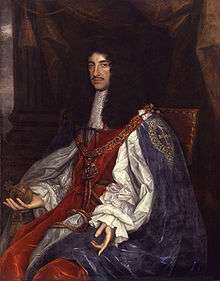 Charles II (1660–1685) | |
| |
Sir Henry Puckering, Bt | 9 February 1676[2] | 23 May 1679[2] | // | ||
_by_John_James_Baker.jpg) |
Sir Stephen Fox | 23 May 1679[2] | 3 January 1680[2] | The Chits | ||
| |
Nicholas Johnson[note 2] and William Fox[note 3] |
3 January 1680[2] | 20 April 1682[2] (†Johnson) 28 April 1682[2] | |||
| |
Charles Fox[note 4] | 28 April 1682[2] | 26 December 1685[2] | |||
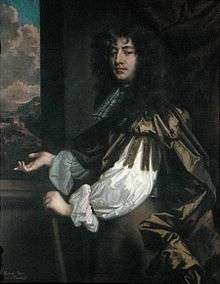 |
The Earl of Ranelagh | 26 December 1685[2] | 22 December 1702[2] |  James II (1685–1688) | ||
| Carmarthen–Halifax
Pembroke |
 William and Mary (1689–1694) William III (1694–1702) | |||||
| Godolphin–Marlborough |  Anne (1702–1714) | |||||
| John Grubham Howe | 22 December 1702[2] | 3 October 1714[2] | ||||
| Harley | ||||||
 |
Sir Robert Walpole | 3 October 1714[2] | 17 October 1715[2] | Townshend
|
 George I (1714–1727) | |
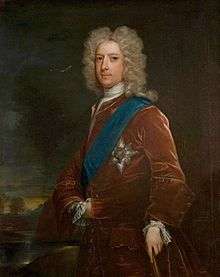 |
The Earl of Lincoln | 17 October 1715[2] | 11 June 1720[2] | |||
 |
Sir Robert Walpole | 11 June 1720[2] | 19 April 1721[2] | |||
 |
The Lord Cornwallis | 19 April 1721[2] | 20 January 1722[2] | Walpole–Townshend | ||
 |
Hon. Spencer Compton (Lord Wilmington from 1728) |
15 March 1722[2] | 15 May 1730[2] | |||
 George II (1727–1760) | ||||||
 |
Hon. Henry Pelham | 15 May 1730[2] | 24 December 1743[2] | Walpole
| ||
 |
Thomas Winnington | 24 December 1743[2] | 23 April 1746† | Broad Bottom | ||
 |
William Pitt the Elder | 7 May 1746[2] | 16 December 1755[2] | |||
| Newcastle I | ||||||
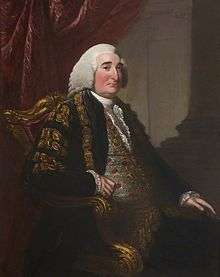 Dupplin |
The Earl of Darlington and The Viscount Dupplin |
16 December 1755[2] | 8 December 1756[2] | |||
| The Viscount Dupplin and Thomas Potter |
8 December 1756[2] | 15 July 1757[2] | Pitt–Devonshire
| |||
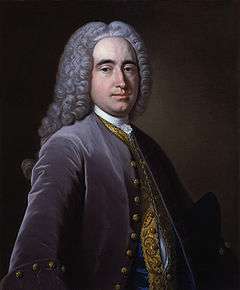 |
The Lord Holland | 15 July 1757[2] | 12 June 1765[2] | Newcastle II | ||
 George III (1760–1820) | ||||||
| Bute
| ||||||
 |
Hon. Charles Townshend | 12 June 1765[2] | 21 August 1766[2] | //
| ||
.jpg) North |
Lord North and George Cooke |
21 August 1766[2] | 9 December 1767[2] | // | ||
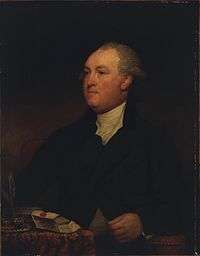 Townshend |
George Cooke and Thomas Townshend |
9 December 1767[2] | 5 June 1768[2] (†Cooke) 17 June 1768[2] | |||
| |
Richard Rigby | 17 June 1768[2] | 10 April 1782[2] | //
| ||
 |
Edmund Burke | 10 April 1782[2] | 1 August 1782[2] | Rockingham II | ||
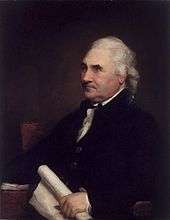 |
Isaac Barré | 1 August 1782[2] | 16 April 1783[2] | Shelburne | ||
 |
Edmund Burke | 16 April 1783[2] | 8 January 1784[2] | Fox–North Coalition
| ||
 |
William Wyndham Grenville | 8 January 1784[2] | 7 April 1784[2] | // | ||
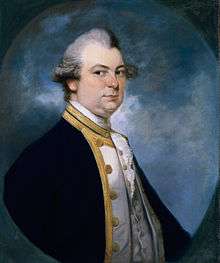 Mulgrave |
William Wyndham Grenville and The Lord Mulgrave |
7 April 1784[2] | 2 September 1789[2] | |||
| The Lord Mulgrave and The Duke of Montrose |
2 September 1789[2] | 7 March 1791[2] | ||||
| Hon. Dudley Ryder and Thomas Steele |
7 March 1791[2] | 5 July 1800[2] | ||||
| Thomas Steele and George Canning |
5 July 1800[2] | 26 March 1801[2] | ||||
| Thomas Steele and The Lord Glenbervie |
26 March 1801[2] | 3 January 1803[2] | Addington | |||
| Thomas Steele and John Hiley Addington |
3 January 1803[2] | 7 July 1804[2] | ||||
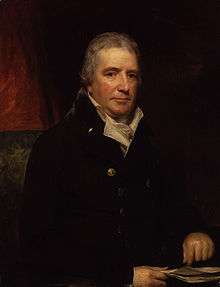 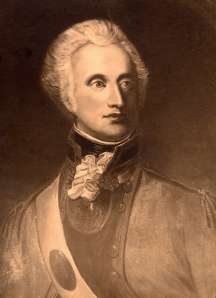 |
George Rose and Lord Charles Somerset |
7 July 1804[2] | 17 February 1806[2] | Pitt the Younger II | ||
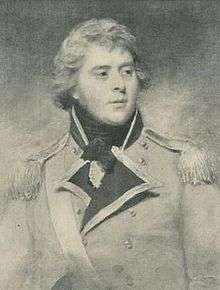  |
The Earl Temple and Lord John Townshend |
17 February 1806[2] | 4 April 1807[2] | All the Talents | ||
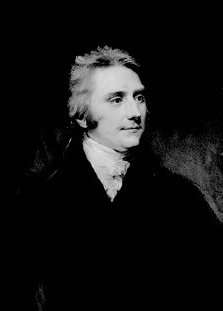  |
Charles Long and Lord Charles Somerset |
4 April 1807[2] | 26 November 1813[2] | Portland II
| ||
 |
Charles Long and Hon. F. J. Robinson |
26 November 1813[2] | 9 August 1817[2] | // | ||
 |
Charles Long (Lord Farnborough from 1826) |
9 August 1817[2] (continued) |
14 July 1826[2] | |||
 George IV (1820 – 1830) | ||||||
| |
William Vesey Fitzgerald | 14 July 1826[2] | 10 July 1828[2] | //
Canningite Govt. | ||
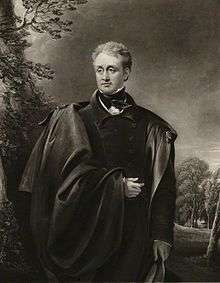 |
John Calcraft | 10 July 1828[2] | 30 December 1830[2] | // | ||
 |
Lord John Russell | 30 December 1830[2] | 30 December 1834[2] | Whig Govt. Grey · Melbourne I |
 William IV (1830–1837) | |
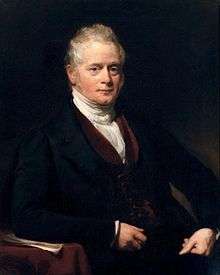 |
Sir Edward Knatchbull, Bt | 30 December 1834[2] | 28 April 1835[2] | Peel I | ||
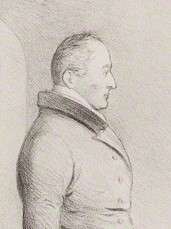 |
Sir Henry Parnell, Bt | 28 April 1835[2] | 1 December 1836[2] | Melbourne II | ||
Office merged into that of Paymaster General, 1836.
Paymaster of the Forces Abroad
From 1702 to 1714, during the War of the Spanish Succession, there was a distinct Paymaster of the Forces Abroad, appointed in the same manner as the Paymaster.[2] These were appointed to a special office to oversee the pay of Queen Anne's army in the Low Countries, and are not in the regular succession of Paymasters of the Forces.[3] The salary of the position was 10 shillings a day.[2] Colonel Thomas Moore was paymaster of the land forces in Minorca and in the garrisons of Dunkirk and Gibraltar and is not always counted among the Paymasters of the Forces Abroad.
- Charles Fox (23 December 1702[2] – 10 May 1705[2])
- The Hon. James Brydges (10 May 1705[2] – 4 September 1713[2])
- Col. Thomas Moore (4 September 1713[2] – 3 October 1714[2])
See also
Notes and references
- Notes
- References
- 1 2 Sutherland, Lucy S.; Binney, J. (1955). "Henry Fox as Paymaster General of the Forces". The English Historical Review. Oxford University Press. 70 (275): 229. doi:10.1093/ehr/lxx.cclxxv.229.
- 1 2 3 4 5 6 7 8 9 10 11 12 13 14 15 16 17 18 19 20 21 22 23 24 25 26 27 28 29 30 31 32 33 34 35 36 37 38 39 40 41 42 43 44 45 46 47 48 49 50 51 52 53 54 55 56 57 58 59 60 61 62 63 64 65 66 67 68 69 70 71 72 73 74 75 76 77 78 79 80 81 82 83 84 85 86 87 88 89 90 91 92 93 94 95 96 Sainty, J. C. "Paymaster of Forces 1661–1836". Office-Holders in Modern Britain. The Institute of Historical Research. Retrieved 8 July 2016.
- ↑ Gater, G. H.; Wheeler, E. P., eds. (1935). "Office of the Paymaster-General". St Martin-in-The-Fields I: Charing Cross. Survey of London. 16. London: London County Council. pp. 17–27 – via British History Online.